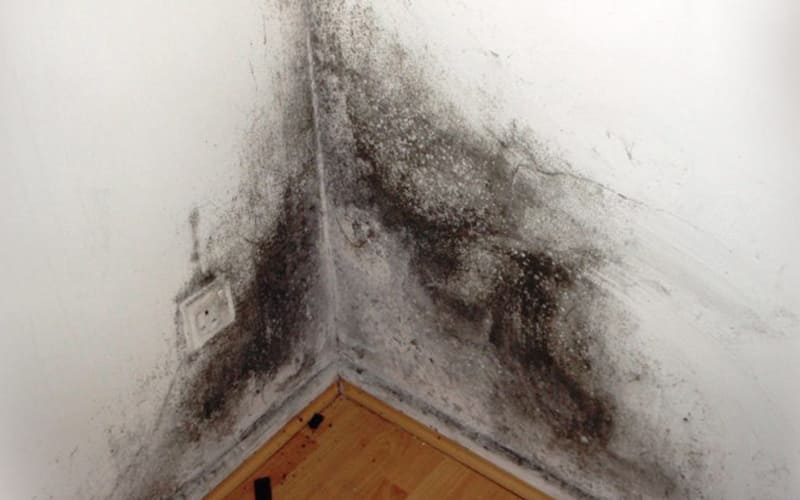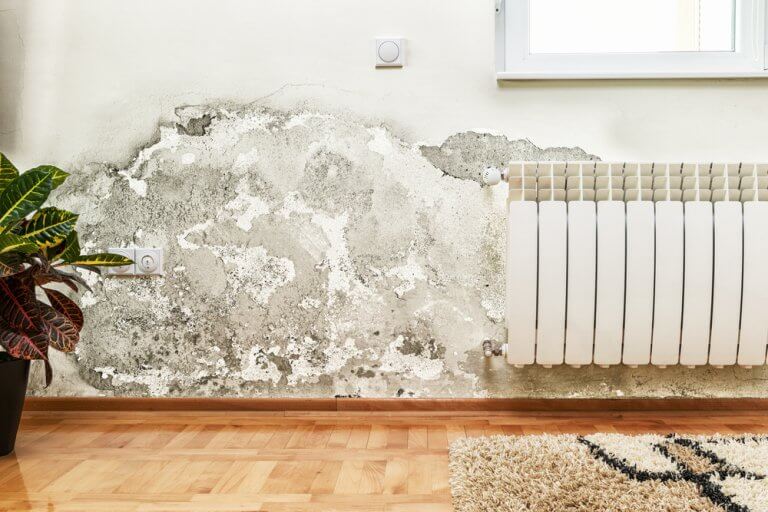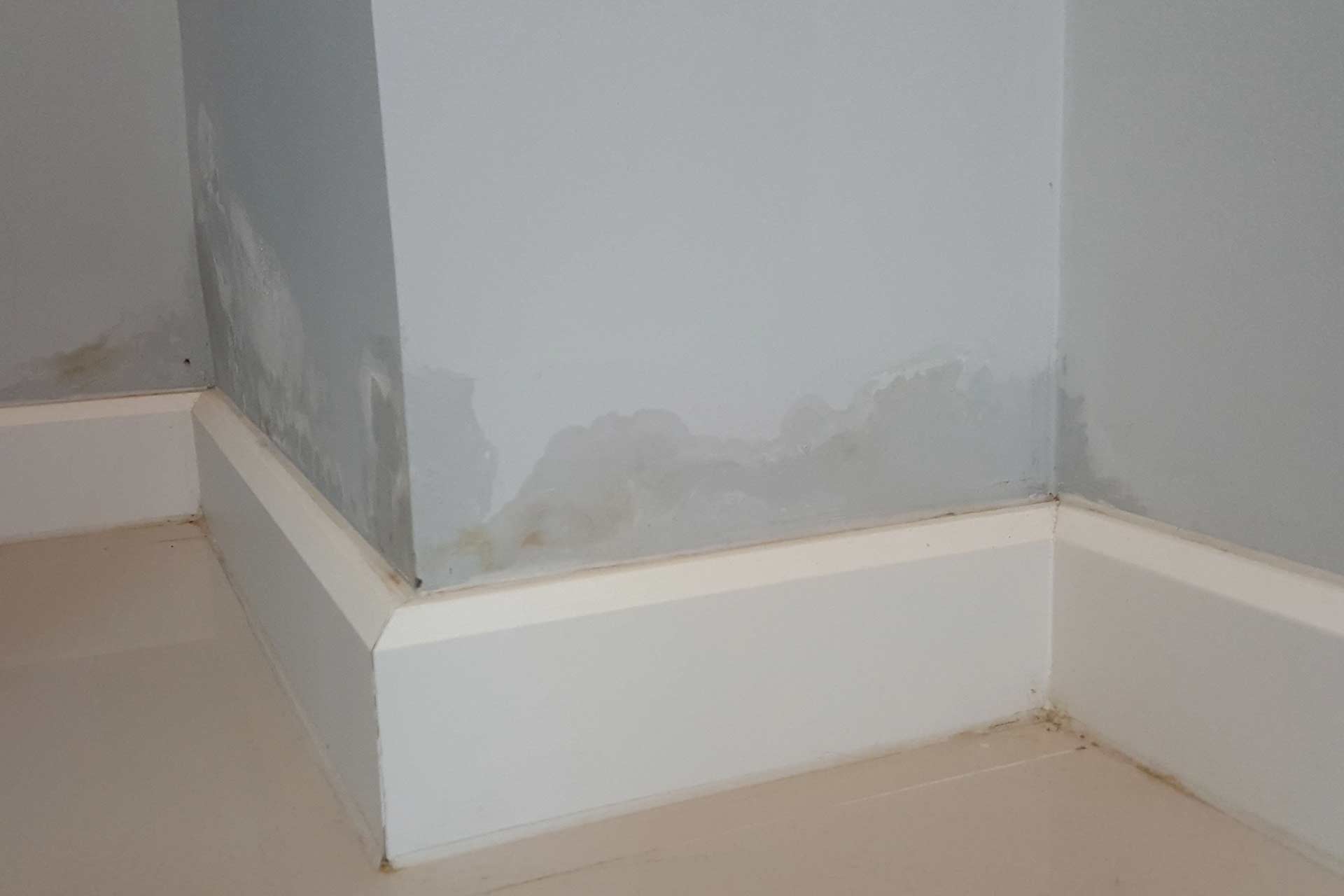Causes of Wet Walls in Bedroom Corners

A damp bedroom corner can be a frustrating and potentially harmful problem. Understanding the common causes of this issue is crucial for addressing it effectively. Moisture accumulation in bedroom corners is often a result of a combination of factors, including poor ventilation, leaks, and condensation.
Poor Ventilation
Inadequate ventilation is a major contributor to dampness in bedroom corners. When air cannot circulate properly, moisture from sources like breathing, showering, and cooking can build up, leading to condensation on cold surfaces.
A well-ventilated bedroom allows moisture to escape, preventing it from accumulating on walls.
- Insufficient Airflow: Rooms with limited or no windows, or those with closed windows for extended periods, can suffer from stagnant air, allowing moisture to linger.
- Blocked Vents: Blocked or malfunctioning ventilation systems, such as exhaust fans or air vents, can impede air circulation, trapping moisture inside.
- Lack of Air Movement: The absence of fans or other devices that create air movement can exacerbate the problem, especially in rooms with high humidity levels.
Leaks
Leaks from plumbing fixtures or roof issues can also cause wet walls in bedroom corners.
- Plumbing Leaks: Leaky pipes or faucets in bathrooms, kitchens, or even within the walls themselves can result in water seeping into the surrounding area, causing dampness.
- Roof Leaks: Cracks or damage to the roof can allow rainwater to enter the attic or upper floors, potentially leading to water damage in bedroom corners.
- Window Leaks: Improperly sealed windows can allow rain or moisture to seep into the room, especially during storms or high winds.
Condensation
Condensation occurs when warm, moist air comes into contact with a cold surface, such as a wall. This process can contribute significantly to wet walls in bedroom corners.
- Cold Walls: Corners of rooms often have colder surfaces compared to the center of the walls, making them more susceptible to condensation.
- High Humidity: High humidity levels in the air increase the likelihood of condensation, especially during the colder months when the temperature difference between inside and outside is greater.
- Lack of Insulation: Poorly insulated walls can allow cold air to penetrate from the outside, making the walls colder and more prone to condensation.
Checklist of Possible Causes
Here is a checklist of possible causes of wet walls in bedroom corners that homeowners can use to assess their situation:
- Ventilation: Is the bedroom well-ventilated? Are windows open regularly? Are ventilation systems working properly?
- Plumbing: Are there any leaks in plumbing fixtures or pipes in the bathroom, kitchen, or within the walls?
- Roof: Is the roof in good condition? Are there any signs of leaks or damage?
- Windows: Are windows properly sealed? Are there any drafts or leaks around the windows?
- Humidity: Are humidity levels in the bedroom high? Is there a dehumidifier in use?
- Insulation: Is the bedroom adequately insulated? Are there any gaps or cracks in the insulation?
Addressing Wet Wall Issues in Bedroom Corners

Dealing with a wet wall in your bedroom corner can be a frustrating experience, but tackling it effectively requires understanding the source of the moisture. Once you’ve identified the cause, you can choose the appropriate solution to prevent further damage and ensure a comfortable living space.
Troubleshooting Wet Walls
Pinpointing the cause of the dampness is crucial for choosing the right repair strategy. Here’s a step-by-step guide to help you troubleshoot the problem:
- Inspect the surrounding areas: Look for signs of water damage or leaks in the bathroom, kitchen, or any other adjacent rooms. Check for dripping pipes, faulty plumbing fixtures, or cracked windows.
- Examine the exterior walls: If your bedroom is on the ground floor or an exterior wall is affected, inspect the exterior for any cracks, gaps, or missing sealant around windows or doors. These can allow rainwater to seep in.
- Check the roof: A leaky roof can be a major source of water damage, especially in corners. Inspect the roof for missing shingles, damaged flashing, or blocked gutters.
- Assess the ventilation: Poor ventilation can contribute to condensation buildup, especially in areas with high humidity. Make sure your bedroom has adequate ventilation, such as a window or exhaust fan.
- Look for signs of mold or mildew: Mold and mildew are common indicators of moisture problems. Check for any discoloration, musty odors, or fuzzy patches on the walls.
Potential Solutions for Wet Walls
Once you’ve identified the cause of the dampness, you can choose the appropriate solution. Here are some common approaches:
- Repairing leaks: If you find a leak, it’s essential to address it promptly. Contact a plumber to fix leaking pipes or faulty fixtures. For roof leaks, you’ll need a qualified roofer to make repairs.
- Improving ventilation: Installing an exhaust fan in the bathroom or kitchen can help remove moisture from the air and prevent condensation. Ensure your bedroom has adequate ventilation, and consider using a dehumidifier if needed.
- Sealing cracks and gaps: Seal any cracks or gaps in the exterior walls or around windows and doors using a high-quality sealant. This will prevent rainwater from seeping in.
- Replacing damaged materials: If the wet wall is caused by significant water damage, you may need to replace the damaged drywall, insulation, or flooring.
- Professional assessment: For complex issues, it’s crucial to consult a professional building inspector or contractor. They can identify the root cause of the problem and recommend the best course of action.
Drying Out a Damp Wall, Wet wall in corner of bedroom
After addressing the source of moisture, you’ll need to dry out the affected wall. Here are some methods:
- Improve ventilation: Open windows and doors to allow air circulation and promote drying. Use fans to circulate air directly onto the damp wall.
- Dehumidifiers: Using a dehumidifier can help remove excess moisture from the air and accelerate drying.
- Heat: If possible, use a space heater or other heat source to warm the affected area and encourage drying. However, be careful not to use excessive heat, as this can damage the wall.
Preventing Future Moisture
Once the wall is dry, take steps to prevent future moisture problems:
- Maintain good ventilation: Ensure your bathroom and kitchen have adequate ventilation, and consider using exhaust fans.
- Regular inspections: Regularly inspect your roof, plumbing, and exterior walls for any signs of damage or leaks.
- Proper maintenance: Keep gutters clean and free of debris, and repair any cracks or gaps in the exterior walls promptly.
Moisture-Resistant Materials
When repairing wet walls, consider using moisture-resistant materials:
- Moisture-resistant drywall: This type of drywall is designed to withstand high humidity levels and is often used in bathrooms and kitchens.
- Water-resistant paint: Using a water-resistant paint can help protect the walls from future moisture damage.
- Mold-resistant insulation: Choose mold-resistant insulation to prevent the growth of mold and mildew in the walls.
Preventing Future Wet Walls in Bedroom Corners: Wet Wall In Corner Of Bedroom

Once you’ve tackled the existing wet wall issue, the next step is to prevent it from happening again. This involves understanding the root cause of the moisture and implementing strategies to minimize its occurrence. This section will explore various preventative measures to keep your bedroom corners dry and free from moisture problems.
Improving Ventilation in Bedrooms
Adequate ventilation is crucial in preventing moisture buildup, particularly in areas prone to condensation. Here are some tips to improve ventilation in your bedroom:
- Use Exhaust Fans: Install an exhaust fan in your bathroom and run it after showering or bathing. This will remove excess moisture from the air, reducing the risk of condensation in your bedroom.
- Open Windows: Even for short periods, opening windows can significantly improve air circulation and reduce humidity levels. Try to open windows for at least 15-20 minutes daily, especially in the morning and evening.
- Use Ceiling Fans: Ceiling fans can help circulate air and distribute heat more evenly, reducing the chance of condensation forming on walls. Ensure your ceiling fan is running in the appropriate direction for the season (clockwise in winter, counterclockwise in summer).
Using Moisture-Resistant Paint or Sealant
Moisture-resistant paint and sealant are essential in preventing water damage and mold growth. They act as a barrier, protecting your walls from moisture and preventing it from seeping into the underlying materials.
- Moisture-Resistant Paint: This type of paint is specifically formulated to resist moisture and mildew. It’s a good choice for areas prone to condensation or humidity, such as bedrooms and bathrooms.
- Sealant: Sealant can be applied around windows, doors, and other areas where moisture can enter. It creates a waterproof barrier, preventing water from seeping into the walls and causing damage.
Proper Insulation and Sealing Around Windows and Doors
Proper insulation and sealing around windows and doors play a crucial role in preventing moisture problems. They act as a barrier against drafts and prevent cold air from entering the room, reducing condensation buildup.
- Insulation: Ensure your walls and attic are adequately insulated to prevent heat loss and reduce the temperature difference between the inside and outside of your home. This will minimize condensation formation.
- Sealing: Caulk or weatherstrip around windows and doors to prevent drafts and air leakage. This will create a tighter seal and reduce the amount of cold air entering the room, minimizing condensation.
Preventing Condensation Buildup Through Proper Temperature Control
Condensation forms when warm, moist air comes into contact with a cold surface. Therefore, controlling the temperature and humidity levels in your bedroom is essential to prevent condensation.
- Maintain Consistent Temperature: Try to maintain a consistent temperature in your bedroom, avoiding extreme fluctuations. This will reduce the temperature difference between the air and the walls, minimizing condensation.
- Control Humidity Levels: Use a dehumidifier to remove excess moisture from the air, especially during humid seasons. This will reduce the likelihood of condensation forming on your walls.
Wet wall in corner of bedroom – That wet wall in the corner of your bedroom might be a sign of a bigger problem, but it also presents an opportunity to create a serene space. If you’re looking to improve your sleep, consider painting the walls a calming hue like pale blue or soft green, which can help promote relaxation.
You can find inspiration for the best bedroom wall color for sleep online, and once the wall is dry, you’ll have a fresh start for a peaceful night’s rest.
A wet wall in the corner of your bedroom can be a sign of a plumbing issue, but it could also be a design element, like a small waterfall feature. If you’re looking for a more dramatic design element, you could consider a bedroom with curved wall that incorporates a water feature.
However, if you’re dealing with a leaky pipe, it’s important to address the issue promptly to prevent further damage to your home.